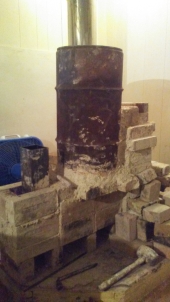


Justin Rhodes 45 minute video tour of wheaton labs basecamp
will be released to subscribers in:
soon!



 1
1













For all your Montana Masonry Heater parts (also known as) Rocket Mass heater parts.
Visit me at
dragontechrmh.com Once you go brick you will never go back!
 1
1








 2
2




For all your Montana Masonry Heater parts (also known as) Rocket Mass heater parts.
Visit me at
dragontechrmh.com Once you go brick you will never go back!






God of procrastination https://www.youtube.com/watch?v=q1EoT9sedqY




 1
1








![Filename: 21.jpg
Description: [Thumbnail for 21.jpg]](/t/102508/a/84221/21.jpg)




![Filename: RMH-a.jpg
Description: [Thumbnail for RMH-a.jpg]](/t/102508/a/84226/RMH-a.jpg)
![Filename: RMH-b.jpg
Description: [Thumbnail for RMH-b.jpg]](/t/102508/a/84227/RMH-b.jpg)
![Filename: RMH-c.jpg
Description: [Thumbnail for RMH-c.jpg]](/t/102508/a/84228/RMH-c.jpg)




 1
1




For all your Montana Masonry Heater parts (also known as) Rocket Mass heater parts.
Visit me at
dragontechrmh.com Once you go brick you will never go back!
 1
1








 )
)
![Filename: Rsz1.jpg
Description: [Thumbnail for Rsz1.jpg]](/t/102508/a/89203/Rsz1.jpg)
![Filename: Rsz2.jpg
Description: [Thumbnail for Rsz2.jpg]](/t/102508/a/89204/Rsz2.jpg)
![Filename: Rsz3.jpg
Description: [Thumbnail for Rsz3.jpg]](/t/102508/a/89205/Rsz3.jpg)
 1
1




Silence is Golden
For all your RMH needs:
dragontechrmh.com








For all your Montana Masonry Heater parts (also known as) Rocket Mass heater parts.
Visit me at
dragontechrmh.com Once you go brick you will never go back!












 2
2




 2
2













![Filename: Rsz1.jpg
Description: [Thumbnail for Rsz1.jpg]](/t/102508/a/89459/Rsz1.jpg)
![Filename: Rsz3.jpg
Description: [Thumbnail for Rsz3.jpg]](/t/102508/a/89460/Rsz3.jpg)
![Filename: rsz4.jpg
Description: [Thumbnail for rsz4.jpg]](/t/102508/a/89461/rsz4.jpg)




 1
1





 2
2






















 1
1








 1
1




Silence is Golden
For all your RMH needs:
dragontechrmh.com




 1
1








 2
2




Sorry, but I don't have any experience with the Liberator stove so I can't make any claims to its performance. Once thing I can say for sure though that my name is not Ianto but Gerry.Hazel Brand wrote:Hello Ianto thanks for your reply! I appreciate your insight into the need for the height of the chimney. it sounds good. I'm just so confused - watching videos and reading comments on the Liberator - with no mass to radiate heat long after the burn and just a loud hissing 700 degree thing in my house. Do you have any comments on the Liberator from your wonderful expertise?
Silence is Golden
For all your RMH needs:
dragontechrmh.com




 1
1





|
It looks like it's time for me to write you a reality check! Or maybe a tiny ad!
Learn Permaculture through a little hard work
https://wheaton-labs.com/bootcamp
|









